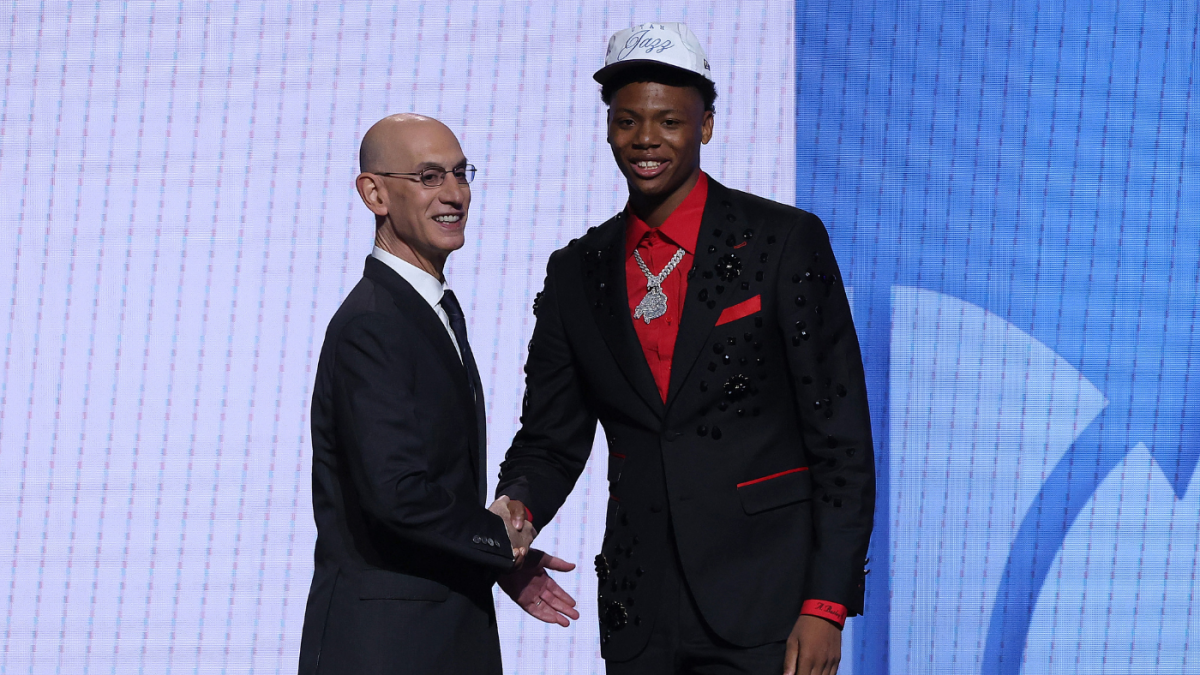Ace Bailey’s selection by the Utah Jazz at No. 5 in the 2025 NBA Draft marked a pivotal moment in the league’s draft history, blending high-stakes drama with a test of player agency. The move defied conventional draft norms and raised questions about the balance of power between teams and top prospects. Bailey, a consensus top-three talent, had reportedly signaled his unwillingness to join certain franchises, including the Jazz, making his selection a bold statement by Utah’s front office.
Bailey’s case was unique not just for his basketball skills but for the calculated approach his camp took leading up to the draft. His athleticism, defensive versatility, and scoring ability made him a coveted prospect, yet his representatives openly communicated that he would not report if selected by certain teams. This strategy, whether intended to leverage a better situation or avoid perceived poor fits, disrupted the traditional draft process. The Jazz, despite being one of the teams reportedly warned, took the gamble, signaling their confidence in securing Bailey’s services.
The Jazz’s decision to draft Bailey at No. 5 was a calculated risk. Utah’s roster already featured promising young talent, but the team’s recent history—marked by the departures of stars like Rudy Gobert and Donovan Mitchell—had not positioned it as a top destination for free agents or draft prospects. By selecting Bailey, the Jazz bet on his talent outweighing any initial reluctance. However, the move also carried significant risks, including potential discontent within the locker room and a prolonged standoff if Bailey refused to report.
Bailey’s hardline stance was not without precedent. Top prospects have long used pre-draft workouts, medical evaluations, and agent negotiations to influence their landing spots. Kobe Bryant’s infamous demand to join the Los Angeles Lakers and Eli Manning’s orchestrated exit from the San Diego Chargers in the 2004 NFL Draft are notable examples of players successfully steering their own destinies. Bailey’s motives, however, were multifaceted. Market size, endorsement opportunities, organizational stability, and cultural fit likely played roles in his camp’s strategy. For the Jazz, the challenge now is to convince Bailey that Utah offers the right environment for his growth and success.
The NBA’s draft system has long been a point of contention, particularly regarding player autonomy. The draft remains one of the few areas in professional sports where athletes have little say in their initial team assignment. This tension has led to occasional standoffs, with players sitting out seasons, declining medical evaluations, or refusing to meet with certain teams. While outright refusals to report are rare, the threat alone can influence team decisions. Bailey’s situation has reignited debates about whether the draft system needs reform to better accommodate player preferences.
The potential outcomes for Bailey and the Jazz are varied. If Bailey reports, he could become a cornerstone for Utah’s young core, bringing his scoring and defensive prowess to the team. However, lingering resentment or a rocky start could derail his development and team chemistry. Alternatively, Bailey could hold out or request a trade, a scenario that would test the Jazz’s ability to extract value in a potential deal. In the most extreme case, the NBA could intervene, potentially leading to policy changes regarding player draft rights.
Bailey’s situation also has broader implications for player representation and future drafts. If his strategy succeeds, more prospects may adopt similar tactics to influence their destinations. Conversely, if the Jazz relationship works out or Bailey’s stance backfires, teams may feel emboldened to ignore such warnings. For the players’ union and the league, this case serves as a real-time experiment in the limits of player leverage and the integrity of the draft system.
Ultimately, Ace Bailey’s journey from a top-three prospect to the fifth pick in the 2025 NBA Draft is more than just draft-night drama. It is a microcosm of the evolving dynamics between players, agents, and teams in the modern NBA. The Jazz have placed a significant bet on Bailey’s talent, but the success of this gamble hinges on his willingness to embrace the opportunity. For now, all eyes are on Salt Lake City, where the next chapter of this unfolding story will be written. Whether this alliance becomes a success story or a cautionary tale remains to be seen, but one thing is certain: the NBA’s draft landscape has been forever altered by this bold move.











